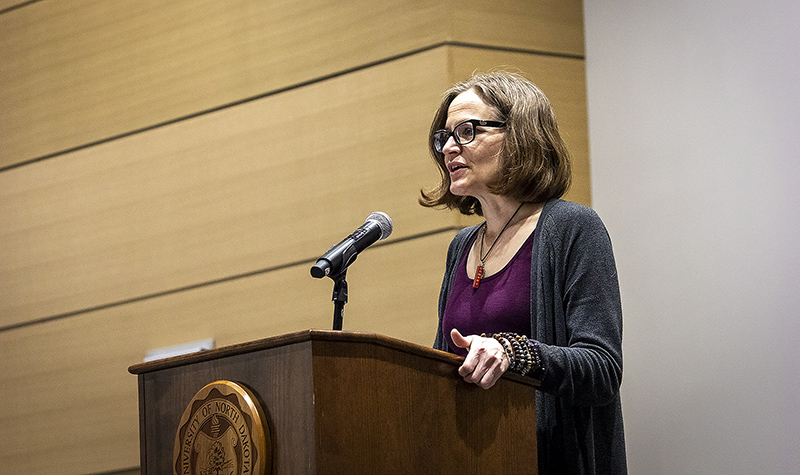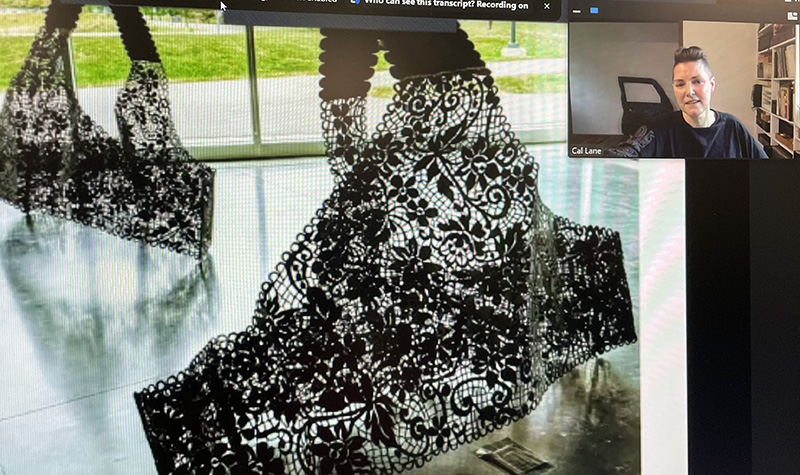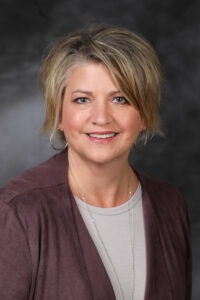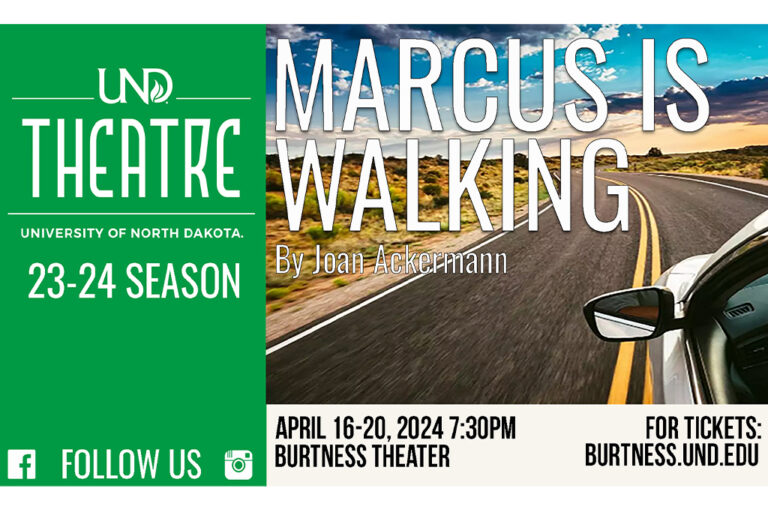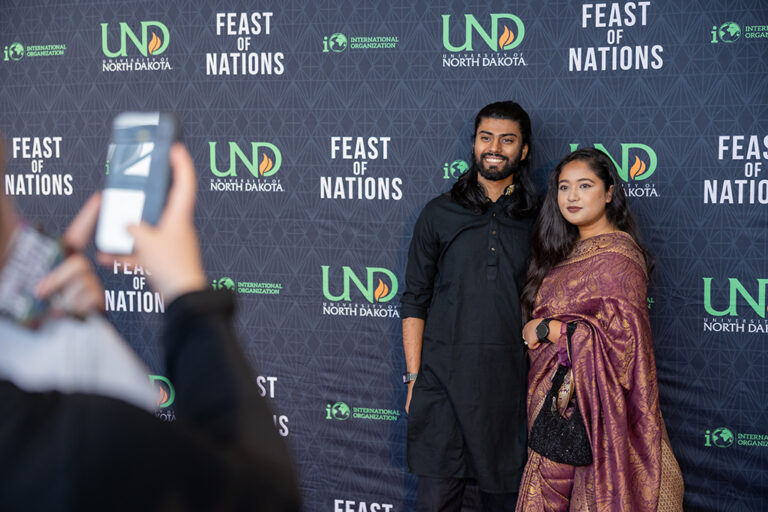Those authors? On this stage, in Grand Forks, N.D.? You bet
53rd UND Writers Conference is the place to hear stories and make brand-new ones

Ever since the late UND English Professor John Little founded the first UND Writers Conference in 1970, book lovers and all kinds of everyone else have come to campus each year for a chance to meet and rub elbows with some of the biggest names in the literary world. After the pandemic pushed the event online for the past two years, a hybrid of the fabled conference finally returned to campus last week.
* * *
On the stage. In the audience. Or wearing comfy slippers from home. It was a three-day weekend of storytelling as old and new friends — writers and fans of literary and visual arts alike — came together for the 53rd annual UND Writers Conference.
Longtime Director Crystal Alberts said the University’s first hybrid conference was a long-awaited and very welcome change after two years of virtual-only events. As always, all of the readings, panels and workshops were free and open to the public, but this year’s listeners were able to interact with the five renowned authors and an award-winning sculptor through a mix of in-person and online conversations.
On opening day Thursday, most of the events were in person and in UND’s Memorial Union Ballroom.
“I’ve seen people here who have been coming to the Writers Conference for decades, forever,” Alberts said. “Alums from Canada and everywhere are saying ‘hi’ to each other. COVID has kept some of them from being able to go out much, and for many, this is their first time in the new building. It’s just so great to see everybody back.”
A homecoming of sorts
Retired Grand Forks teacher and poetry chapbook author Nancy Devine was one veteran who was happy to be back on campus.
“It’s kind of weird not to be in the old Union, but it’s good to be here in person,” Devine said. “I wish there were more in-person events, but I get it. It’s fine.”
As a longtime regular, Devine said she’s had the opportunity to see many famous authors face to face over the years.
There was Alex Haley, Norman Mailer and Salman Rushdie. Susan Sontag, Alan Ginsberg and Jack Kerouac. Tim O’Brien and Truman Capote.
“It just kind of amazes me that I saw Alex Haley in Grand Forks, North Dakota,” she said. “There are so many names that aren’t even coming out of my brain right now. I think people really should take advantage of what you can do in this town because there really is a lot to do.”
When asked what she most looked forward to this year, she said: “Well, have you seen ‘Nomadland?’ That’s why I’m here. Twice, I’ve seen it.”
That was to say she was excited about meeting author and immersive journalist Jessica Bruder, who wrote the 2017 New York Times bestseller “Nomadland: Surviving America in the Twenty-First Century.”
The nonfiction story gave voice to America’s forgotten — and largely older — itinerant workforce that travels from town to town via secondhand campers and topper-pickup-turned-homes in search of seasonal work. It also was the book that inspired last year’s triple Oscar winner “Nomadland.” Frances McDormand won Best Actress honors for her role in the film, and the movie also took home Best Film and Best Director.
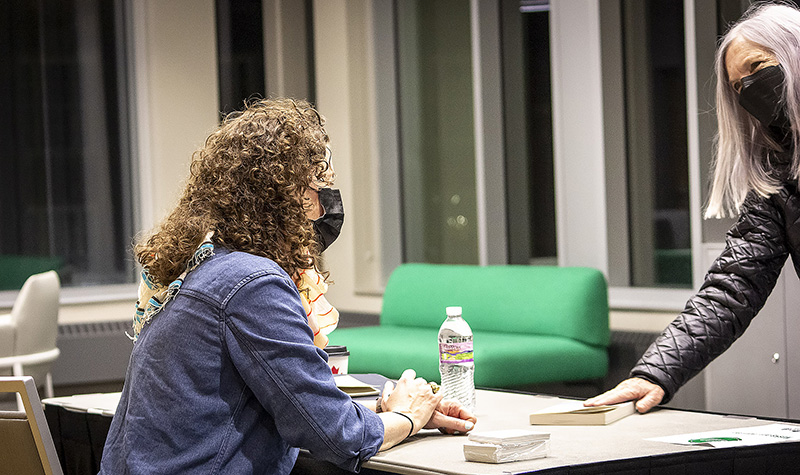
The opening-day acts
Bruder was one of two in-person headliners at the Writers Conference on opening day. Introduced as the creator of a modern-day “Grapes of Wrath,” she shared with the audience her experiences getting to know the real people in her book while living and crisscrossing the country with them in a van she nicknamed Halen.
Bruder shadowed the nomadic workers for days, weeks and months — until she “became part of the furniture” — laboring alongside them at temporary jobs for employers in industries such as warehousing and the sugar-beet harvest. The project spanned three years and more than 15,000 miles.
Besides reading mesmerizing passages from her book and fielding questions from the audience on Thursday, Bruder also participated in a panel discussion on “work” with new author and former North Dakota Agriculture Commissioner Sarah Vogel, along with artist and internationally renowned metal sculptor Cal Lane.
Vogel’s book, “The Farmer’s Lawyer: The North Dakota Nine and the Fight to Save the Family Farm,” is a true David vs. Goliath tale. It details how Vogel came to lead the national class-action lawsuit on behalf of 240,000 farmers during the Farm Crisis of the 1980s.
The case resulted in an injunction that prohibited the USDA from foreclosing on 16,000 family farms. Vogel’s work was featured in Life Magazine and, in 1984, became the basis of another movie. “Country” starred native Minnesotan Jessica Lange, who earned an Academy Award nomination for her role. (Little-known fact: Lange’s older sister was Vogel’s college roommate at UND.)
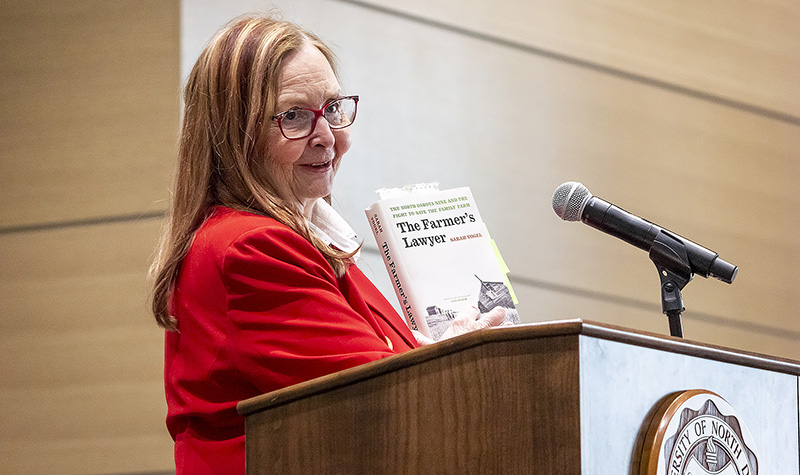
The third headliner on opening day was the Canadian-born Lane, who took part via Zoom.
A self-described tomboy and recluse, the artist smiled as she told the story of being fired multiple times from her mother’s hair salon. Whether it was her hair, her clothes or her aversion to makeup, she just never looked the part.
But when a random newspaper ad caught her eye some years later, she decided to go to trade school to train as a welder. She drifted a bit, she said, and tried many jobs before she eventually earned her Master of Fine Arts and discovered her true calling in conceptual art. Today, she’s probably best-known for sculpting intricate and lacy patterns out of everyday tools and industrial steel such as I-beams, tanks and oil barrels. Think of a doily car hood or a giant pair of metal panties. That’s Lane. She’s exhibited her work in galleries as far away as Australia, Belgium, England and France.
Other writers on the bill Friday and Saturday were Kelli Jo Ford of the Cherokee Nation of Oklahoma and author of the novel “Crooked Hallelujah;” Kaitlyn Greenidge, whose debut novel “We Love You, Charlie Freeman” was one of the New York Times Critics’ Top 10 Books of 2016; and award-winning poet, essayist and cultural critic Hanif Abdurraqib of Columbus, Ohio.

A brush with greatness
Overall, nearly 1,000 people from Seattle and Los Angeles to Montreal and Miami took part in the three-day conference, Alberts said.
And whether they participated in person or via Zoom, they likely found inspiration.
Said Marilyn Berg: “I don’t get to come every year, but most every year I can, I like to try to make it. I belong to a writers group, and this just keeps me motivated. Something like this is just so special. “
Not far away sat friends Becky Ronkowski and Lisa Carney. It was the first Writers Conference for Ronkowski, but Carney quickly brought her and the rest of the table up to speed.
“I remember my first or second conference, when my father brought me and the ballroom was absolutely packed,” Carney said. “The students were sitting on the floor, and everybody was smoking because everyone smoked back then.”
Describing a scene reminiscent of a 1970s rock concert, she said, “It was the old, rustic Union. Smoke was in the air. It was this beatnik-type of thing, and it was really happening. It was really a cultural experience.”
Today’s conferences may be smoke-free, but Alberts says there’s still one thing the old and new have in common: Unlike in New York or L.A., it feels like everyone gets a VIP pass and comes away with great stories to tell.
That certainly was the case for Carney. While telling tales of conferences past, she suddenly stopped midsentence when she recalled her long-ago encounter with Norman Mailer at an after-party. She and others were able to talk politics and writing with the famous author for hours.
That’s the UND Writers Conference difference, and the very real advantage of the fact that it takes place in Grand Forks, N.D.
DID YOU KNOW? You can listen to past Writers Conference authors, poets, screenwriters and film directors. Check them out at the Writers Conference Digital Project or UND Scholarly Commons.
But first, brew some coffee and clear your schedule. It’s so entertaining, you’re likely to get lost for a while. (Please note, videos from the recent conference will not be posted quite yet.)
